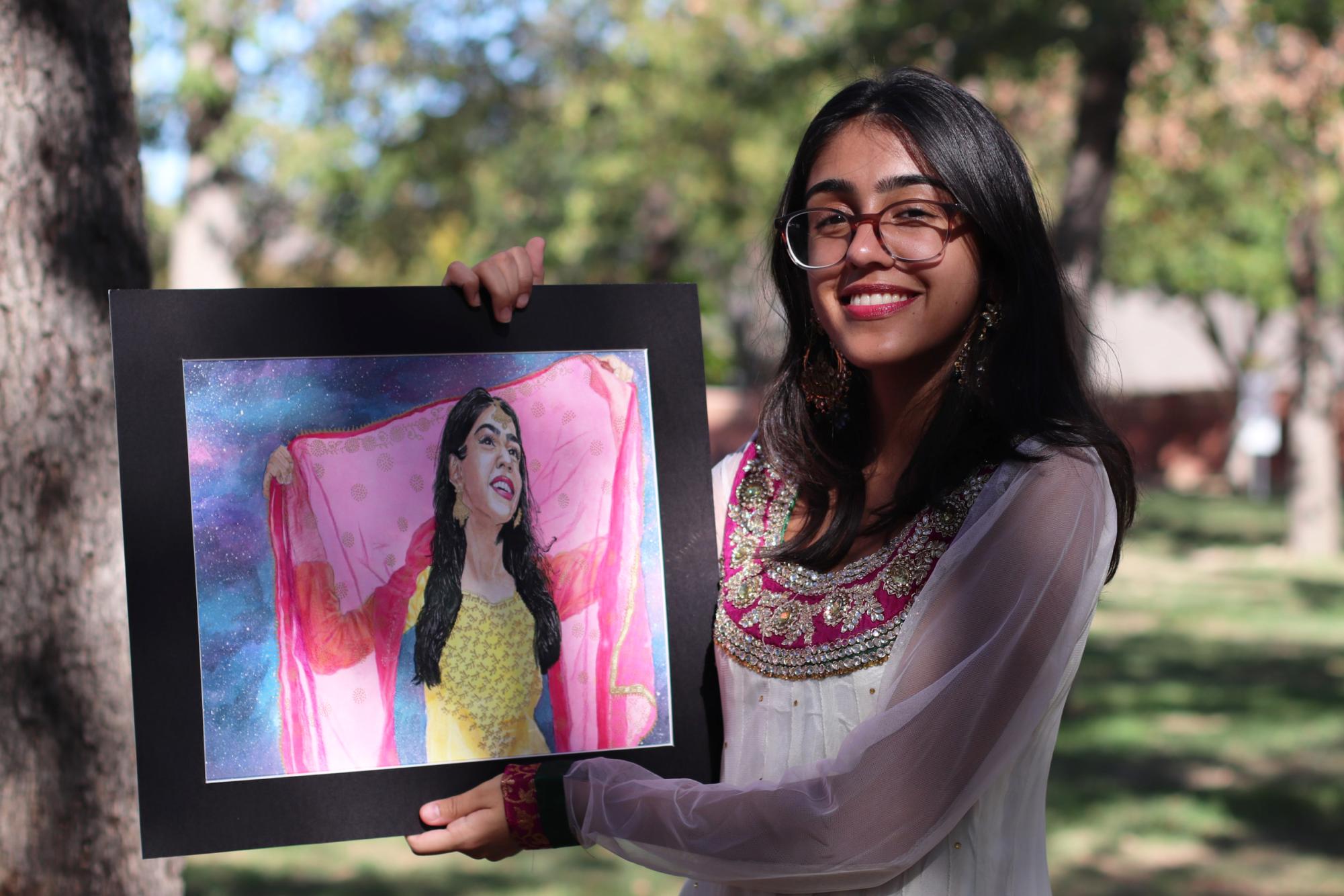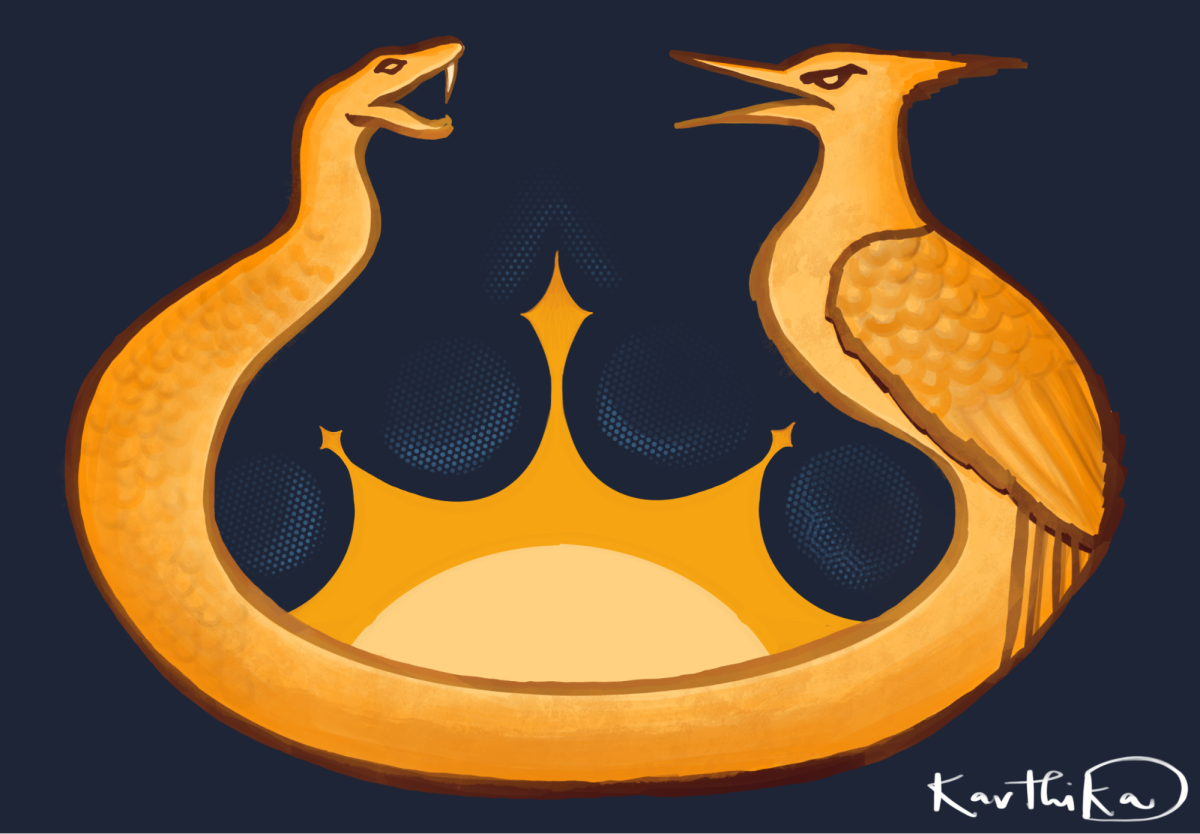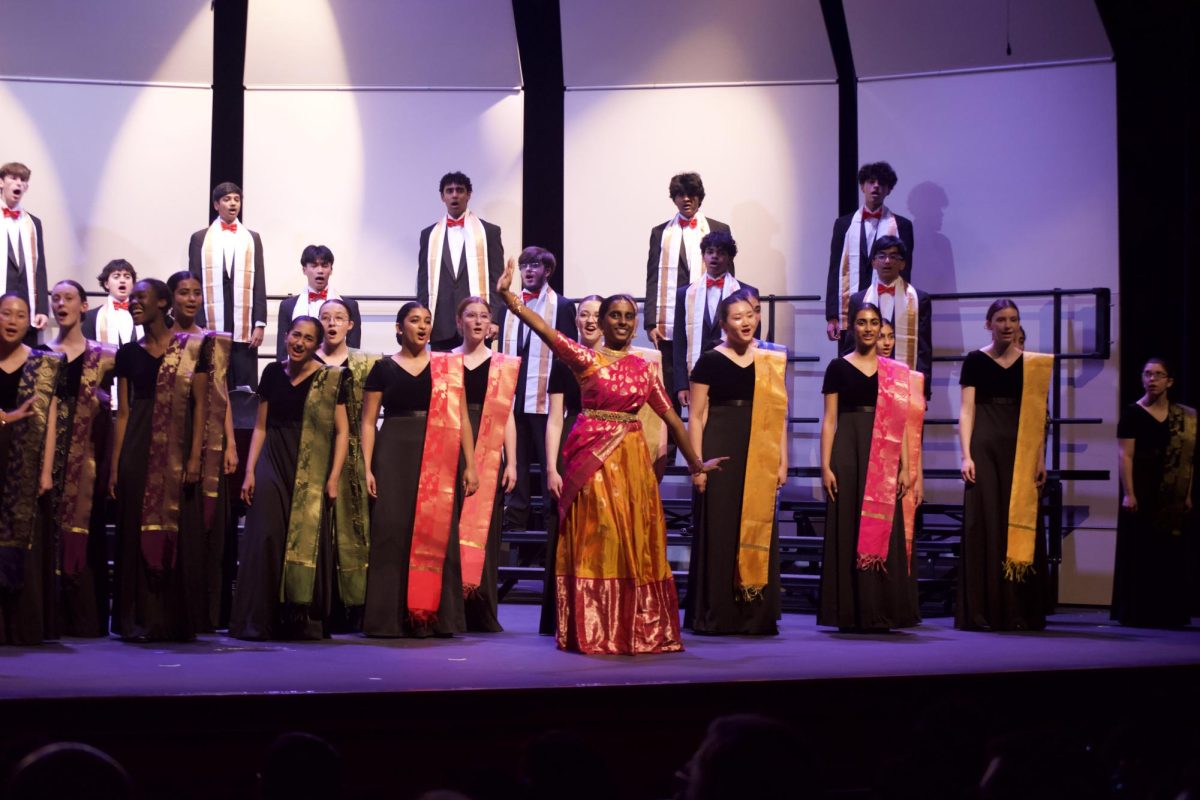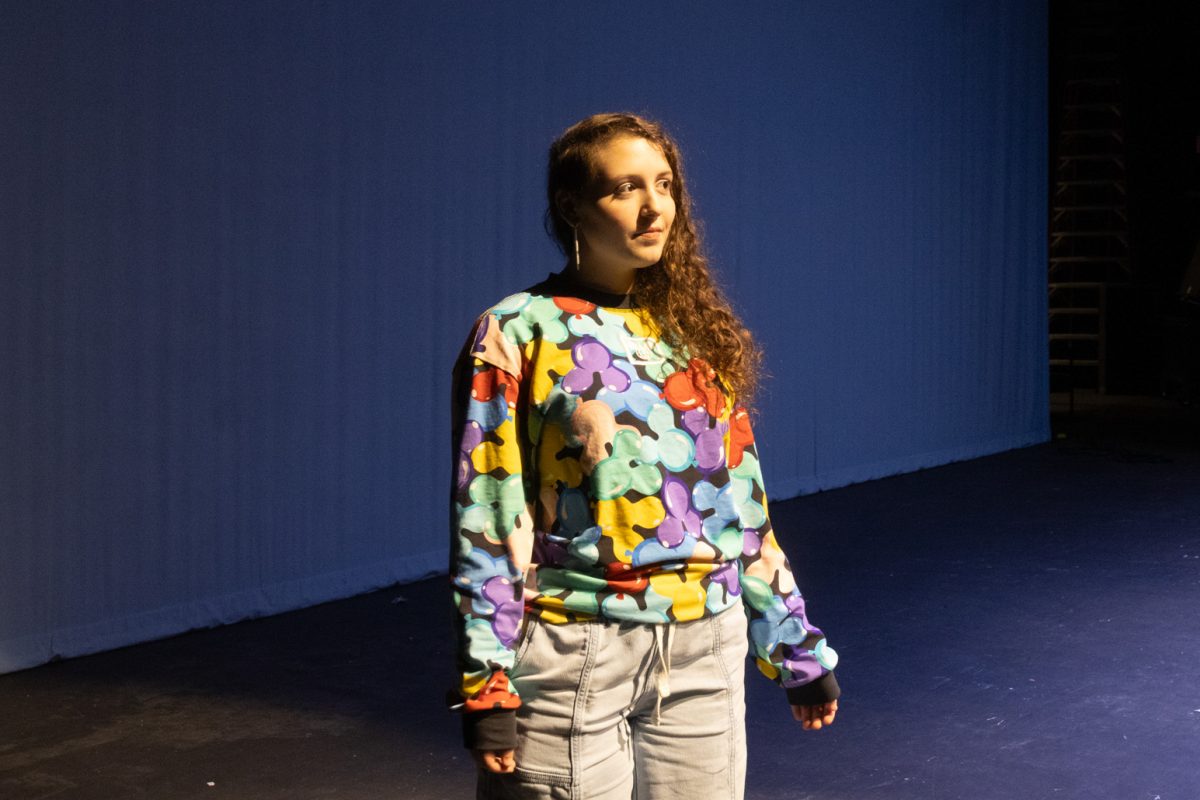“We were at a yield sign and my mother couldn’t see,” Rahi recalled. “She pulled up a bit forward, but the car behind us just saw that the car was moving, so it didn’t stop. My head snapped forward and then it snapped back into the seat belt receiver.”
What Coppell High School senior Isha Rahi thought was mild whiplash quickly turned chronic. The arch in her neck straightened out post-accident, but physical therapy was just a band-aid solution.
Rahi moved to Coppell from Jacksonville, Fla. prior to her eighth grade year. She attended Coppell Middle School North with her only goal being to fit in. Taking advice from a family friend, she joined athletics hoping it was her ticket to friendships.
“Gym at my old school was just talking,” Rahi said. “People were lifting my body weight [at Coppell] and I was struggling to lift the bar. My neck and my shoulders were in so much pain. But I wasn’t going to tell anyone. I can’t be weak, people already think I look stupid. I kept doing it, I kept trying, I did get better.”
But soon, she couldn’t take it anymore.
“I was really tired of putting myself through all this pain because there was a time where I could not hold my head up – It hurt that bad,” Rahi said. “It made me realize that it doesn’t matter what anyone else thinks. And if I don’t care about myself, then who’s going to care about me?”
When COVID-19 peaked during the second semester of her eighth grade year, Rahi set forth on an introspective journey, understanding that only she could find ways to heal her pain.
Consistency with meditation and journaling put her one step forward, but Rahi found true solace in simply doodling in her sketchbook.
Art had always been a part of Rahi’s life. Her piece from kindergarten was put on display in the Virginia Museum of Fine Arts. In seventh grade, her artwork “Forgotten Children” was showcased at Florida State College at Jacksonville. In ninth grade, she joined honors Art I.
“When I was younger, art had always been a safe space for me,” Rahi said. “It’s always been something that takes me away, but especially COVID year and after, I really got into it. I was sketching all the time, I was drawing all the time and it was my stress reliever.”
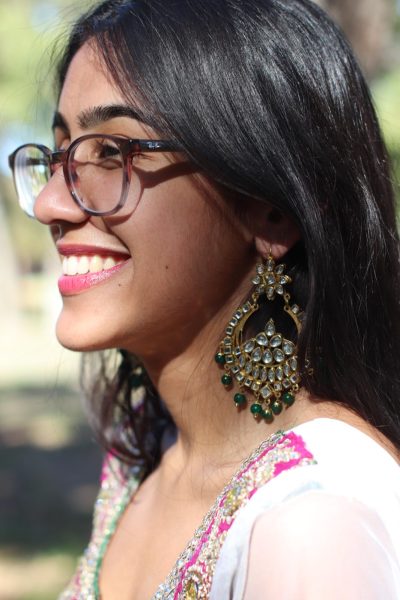
Simultaneously, she used this time to delve into her love for social entrepreneurship, working with nonprofits to advocate for women’s rights within the South Asian community.
Diving into the nonprofit sector, Rahi worked herself to the bone in her junior year, losing herself to her chronic pain as she became entangled with the course load of school and her social activism.
“A lot of it, I was jumping head first,” Rahi said. “I had this idea where I just wanted to get in there and make a difference. And a lot of what I learned is you have to take that first step back. You have to listen to the community first. You don’t talk, you listen. Don’t rush them.”
And Rahi did just that. She not only listened to the people she worked with, she opened her ears to the things that her body was telling her to do: to regain her sleep and prioritize the right things. She took a step back and revisited her time journaling, meditating and especially connecting with nature.
“Once you have that connection with nature and you just look around and actually pay attention to it, and it reminds you that there’s something greater here,” Rahi said. “And it reminded me of those days when I actually prioritized myself. I started giving myself ample sleep and time.”
Pulling from her experiences in social work, learning to prioritize herself and her own anecdotes as a person of color, Rahi curated an AP Art portfolio that scored a 5, the highest score. She highlighted the struggles that Asian women face in today’s society and her perspective on breaking that barrier.
“It’s tough for women to be empowered because even if they want to take those first few steps, it’s like ‘Oh, what will people say?” Rahi said. “A lot of my artwork was focused around overall gender, like beauty norms, beauty expectations and overcoming it.”
Her piece “Exotic” takes the viewer on a journey of hypersexualization and the idea that women of color are foreign creatures.
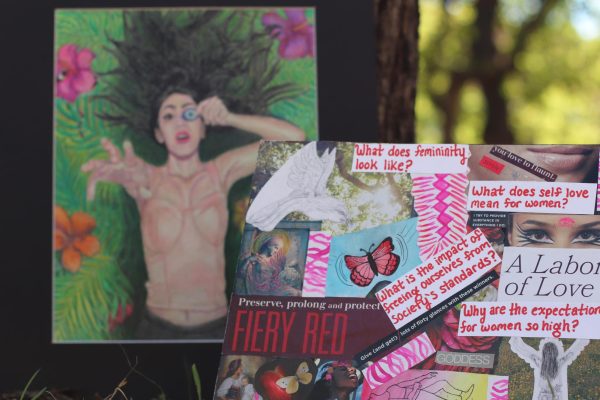
“I wanted to talk about how being a young South Asian woman of color, especially being brown, it is like, oh ‘you’re exotic,” Rahi said. “I created a nude-colored top and connected it to the idea of nudity and some preconceptions based on it. One of the things that I wanted to say is why does your mind go to the sexualization aspect of it?”
Rahi, in the top left corner of her artwork, drew in a King Scarlet snake although she’s afraid of such creatures. These snakes look similar to coral snakes but lack the latter’s poison. She uses this symbol to convey how women have to conform and appear in a certain way to avoid danger.
Her second piece, “A Daughter’s Burden,” touches on sexism within the South Asian community. Her father and uncle are currently the only living males with the Rahi last name and she received comments about how her parents worked so hard only for the last name to be lost.
“I was affronted by that,” Rahi said. “So I took the embellishment within the suit [of my dress] and I made it my last name in Punjabi. It was a statement that I’m here. I’m carrying the family name and if this is the only way you’re gonna let me carry the family name, I’m carrying it proudly.”
And one of her final pieces is a portrait of her best friend, Brianna Burns basking in her own self-confidence. Burns is a senior in Jacksonville, Fla.
“Art has helped Isha learn to live through what she’s been through, it’s almost therapeutic for her,” Burns said. “She’s able to visually represent the things that she thinks and believes and it’s even furthered her passion for entrepreneurship and wanting to help women. [When I saw the piece] I was in awe. It was a portal into her mind where I was able to see how she sees me, and I really loved it.”
Using this portfolio as her prime example, Isha ran for president of National Arts Honor Society on a platform of using art as a safe space to advocate for change.
“She definitely had a huge impact last year,” junior NAHS vice president Amanda Zhu said. “Having the president role has launched her more into the spotlight and she has taken to it so well.”
Rahi plans on creating a haven for all types of people, introducing art as just one way to slip away from the bustling world.
“Having art as an escape has always been so important for me, and there are so many people here who don’t have that,” Rahi said. “Sometimes you just need a break and art is that break. I don’t want people to look at National Arts Honors Society as just another club or something you do for a chord; when people participate, they realize what the meaning is behind the club. That’s why I’m also approaching all of these other social causes because it’s important for people to understand that you’re heard, you’re valued and we want you here.”
Follow Sri Achanta (@sriachanta_) and @CHSCampusNews on X.


